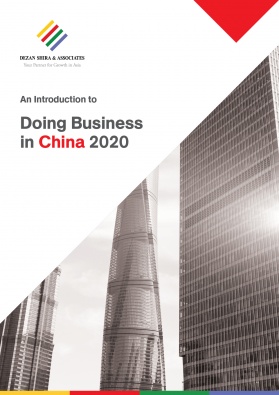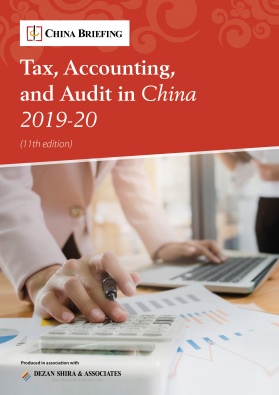US-China 2019 Trade Will Hit about US$560 Billion. Which Sectors are Worth Investing In?
China’s “decoupling” from the US – the happy and unhappy trade lists.
Op/Ed by Chris Devonshire-Ellis
Much media coverage has been concentrating on the continuing US-China trade war, now often termed as a “decoupling” of the two largest economies from each other. The term is in fact inaccurate, as it suggests that trade will completely break. That will not be and is not the case. 2019 bilateral trade between the US and China, according to the United States Census Bureau is currently averaging about US$47 billion a month, with the year probably coming in at about the US$560 billion mark in terms of total bilateral trade turnover. That is not a decoupling.
What is happening is a re-balancing, with tariffs and potential sanctions being aimed at areas designed to limit China’s longer-term development progress. The US does not wish China to develop technologies that will see it leap ahead of the US in terms of tomorrow’s technologies, and especially artificial intelligence (AI). In this case, a likely trajectory will continue to see the US trade with China, and China permitting US companies access to some of the China markets, but areas involving hi-tech industries will be hit.
In fact, in order to follow the US trend in terms of imposing tariffs and sanctions on China, one just has to take a look at the sanctions placed upon Russia.
Think those are really about Crimea? Many are aimed squarely at preventing Russia from quickly developing a hi-tech industry that can compete with the US. Many also impose directly upon Russia’s ability to transfer finances overseas to establish centers elsewhere – including with China.
This trilateral dance of the damned has important repercussions and implications down the line – which of the three economies and technical powers will prevail – China, Russia, or the US? All are in a high stakes struggle for AI supremacy. This means that while trade in certain goods and services will be allowed to continue as normal, others will not. We can divide them into basic happy and unhappy lists:
US-China trade happy list
- Agriculture
- Automotive
- Chemicals
- Consumer products
- Industrial machinery
- Basic electronics
- Garments
- Plastics
- Metals
It should be noted that at any time, specific items on the happy list could be targeted to punish certain sectors to make political points. The US has, for example, imposed tariffs on fairly bog-standard items as part of the trade war to make a point about the US-China trade deficit.
While that is causing some short-term pain for affected businesses reliant on China production resold on the US market, it does not have any other strategic trade value.
In other terms, none of the above categories are future game changers, meaning trade can be expected to largely resume over time or continue unimpeded in these areas.
If your business is involved in the sectors above, then the US-China trade space should continue to be buoyant – petulant trade officials and bumps along the way notwithstanding. The lesson here is also – not to put all your manufacturing or overseas market eggs in one basket. That is the primary reason our offices in Vietnam have been doing so well this year.
US-China trade unhappy list
- AI
- Aviation
- Aerospace
- Biomedical
- Computing
- Communications
- Energy (oil, gas, solar)
- Hi-tech
- Nano-technologies
- Robotics
The unhappy list contains some large commodity areas such as energy, in addition to advanced technologies in a number of sectors, including aviation, aerospace, biomedical research, communications, and an entire array of computing and related industries, such as semi-conductors, software, and other pioneering aspects, such as AI and the development of nano-technologies. As has recently been seen, the US has been pushing back against Chinese companies, such as Huawei, while the Chinese government has issued a ban of all foreign computer and software use in government offices. If your US business is involved in any of these areas, then you can essentially kiss China goodbye – the Chinese will either develop these technologies themselves or partner with another hi-tech nation (such as Russia) to do so.
This means that now, more than ever, China needs to be viewed as a strategic market in both import and export terms. The lessons from the US-China trade war is just that; it is why tariffs are being imposed – petulance over the trade imbalance or a more serious, longer term malaise that will see certain industry sectors once permitted be gradually placed off-limits as we enter a new technological development era, and the race for global dominance around that.
It should be remembered that despite all the doom and gloom and certain US law firms suggesting American businesses should get out of China (See fairly psychotic articles here, here, and here) the reality is that in the right areas, US-China trade is doing well. US$560 billion well in fact. At Dezan Shira & Associates our China business – which exclusively handles foreign direct investment into the country – has increased overall by 13 percent this year. American businesses continue to want to sell to China and continue to want to purchase Chinese-made products. It makes sense to choose advisers who are both in-country and know where the investment trends and opportunities are. US$560 billion suggests there are rather a lot of them.
About Us
China Briefing is written and produced by Dezan Shira & Associates. The practice assists foreign investors into China and has done since 1992 through offices in Beijing, Tianjin, Dalian, Qingdao, Shanghai, Hangzhou, Ningbo, Suzhou, Guangzhou, Dongguan, Zhongshan, Shenzhen, and Hong Kong. Please contact the firm for assistance in China at china@dezshira.com.
We also maintain offices assisting foreign investors in Vietnam, Indonesia, Singapore, The Philippines, Malaysia, and Thailand in addition to our practices in India and Russia and our trade research facilities along the Belt & Road Initiative.
- Previous Article Comparing ASEAN, Chinese Economies, Solar Plan in Vietnam – China Outbound
- Next Article What Now for UK-China Trade as PM Johnson Has a Brexit Mandate?






